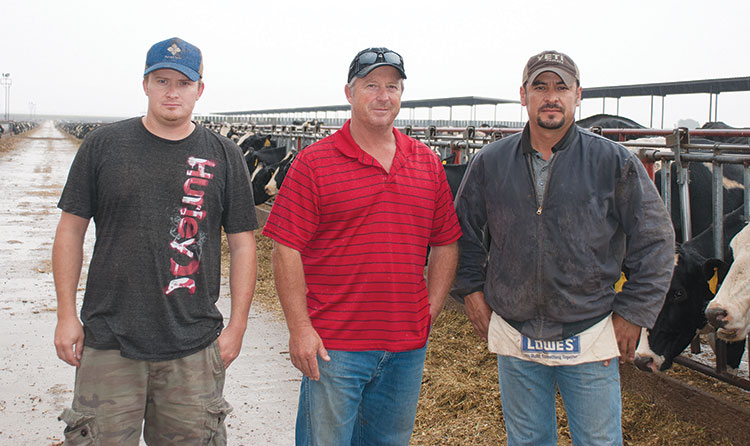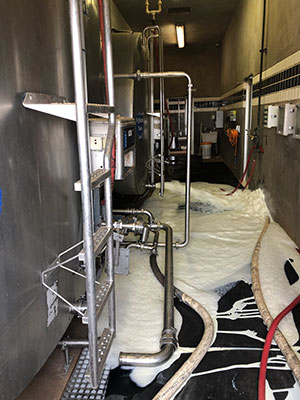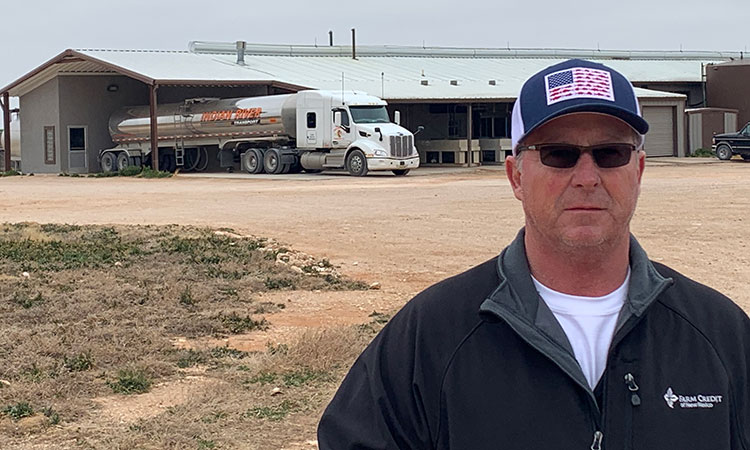
Imagine being told you can’t sell your milk, you can’t market your cows, and the water on your land is contaminated with a slowly degrading man-made chemical. That’s the reality that New Mexico dairyman Art Schaap woke up to last fall.

“In August, Cannon Air Force Base contacted me and wanted to start checking my water. I said, ‘Yeah, sure.’ I had no idea what for, and they didn’t say,” Schaap relayed. He later learned that the base was testing for man-made chemicals called per- and polyfluoroalkyl substances (PFAS).
They were used for years on the Cannon Air Force Base, which borders Schaap’s Highland Dairy, as a component of firefighting foam that was used to put out fires set mostly for training purposes.
When Schaap learned of the danger PFAS posed to human and animal health and the chance that those chemicals might be present in milk, he immediately began dumping the nearly 130,000 pounds of milk produced on the dairy every day.
“I contacted the New Mexico Department of Agriculture because I had concerns of it being in the milk, they came over and contacted the Food and Drug Administration (FDA) for an advisory number for PFAS in the milk,” Schaap explained. “They came and took a sample, and we immediately started dumping the milk.”
Later that month, test results from their milk came back above the FDA’s advisory level for one of the many dozens of PFAS chemicals. Since October, not one drop of the milk from the Highland Dairy has entered the dairy supply chain.
“I’m glad that we started dumping the milk to protect our industry,” Schaap said when asked what he thought was the best decision the farm team had made during this whole process.
“Right now, we’re waiting on the Food Safety Inspection Service (FSIS),” Schaap said of the farm’s next step. “We’re waiting for them to give us direction on what we need to do with the animals. At this moment, I cannot sell them for beef so the only option would be to euthanize them.”
Fortunately, there has been financial support available to Schaap through USDA’s Dairy Indemnity Payment Program. The program provides payments to dairy producers when they are directed to remove raw milk from the dairy supply chain because of contamination.
Should we be concerned?
The PFAS contamination in the farm’s wells and the groundwater contamination of the Ogallala aquifer in the Clovis, N.M., area encompasses a few miles around the Air Force base and particularly to its south and east — the direction that the groundwater flows. Just beyond Highland Dairy, there are several other dairies that are monitoring their own water to ensure it’s safe for their employees and cows.
The movement of water in the Ogallala aquifer, along with the dilution effect of the country’s largest groundwater aquifer, means that PFAS are a relatively low risk to other farms farther away that pull water from this vital resource. That’s the good news for dairy farmers in the area. However, risk from PFAS contamination still exists across the country, even if you don’t live near an Air Force base.
That’s true because PFAS have been used in a wide variety of applications since the products were first introduced in the 1940s. The family of chemicals has been used in nonstick cookware, food packaging, and water resistant fabrics to name just a few.
“The bonds between the carbon and the fluorine in PFAS are about the strongest bonds known to science. They don’t break down very well,” described Senior Regulatory and Environmental Specialist James Bearzi with Glorieta Geoscience Inc. The Santa Fe, N.M., based company works with dairy farms across the country as a consultant on regulatory compliance and environmental science. “PFAS have peculiar properties that are considered useful in many consumer and industrial products because they repel water, they resist heat, and they don’t break down.”
Even low concentrations of PFAS have been shown to be detrimental to human health. According to the Environmental Protection Agency, the compound has been linked to higher cholesterol levels, low infant birth weights, a weakened immune system, cancers, and even thyroid hormone disruption.
The threat has been well documented in human water supplies since at least the early 2000s, but the lack of EPA regulation means that enforceable standards in drinking water and foods have not yet been developed. And, the unenforceable EPA health advisory level has changed over the years.
“The drinking water advisory level, as EPA puts it, keeps coming down. As recently as 2015, it was 400 parts per trillion (ppt), now it’s 70 ppt. Some states have set their own as low as 6 ppt,” explained Bearzi.
Although PFAS present some real and valid risks, proximity to industrial creation or use of the compounds is necessary before there should be concern on your farm.
“If you’re a farmer and you use any groundwater, whether it’s the Ogallala or somewhere else, you want to be looking at what’s happening within 5 to 10 miles of you,” shared Bearzi.
Different kind of contamination
“Certainly, not just PFAS, but other contaminants have come from private industry and government installations for years and years. They contaminate water systems and municipalities, but it’s different with agriculture,” said Bearzi. “In water systems, while they’re trying to clean up the contamination, they can put a treatment system in and still supply clean water to the people.”
Agriculture requires much higher levels of water input and has a very important output — food for human consumption.
“Ultimately, agriculture is about providing a commodity for humans, most often food. For our dairy farmer clients, their number one concern is to make sure that whatever they’re producing is safe for consumers,” Bearzi continued.
For many years, farmers have been on the receiving end of contamination concerns, particularly with waste management and field applications. In the case of these organic compounds, the tables are turned a bit.
“For these organic compounds and chemicals, it’s different. One, they’re coming on a dairy or farm from another location,” shared Bearzi. “The management and cleanup is up to someone else, and that makes it harder as well.”
“Dairy is a highly regulated industry, and we are held accountable on our wastewater and our nutrient water from our dairy, and so I think that the Air Force needs to be held accountable, too,” Schaap concluded.












